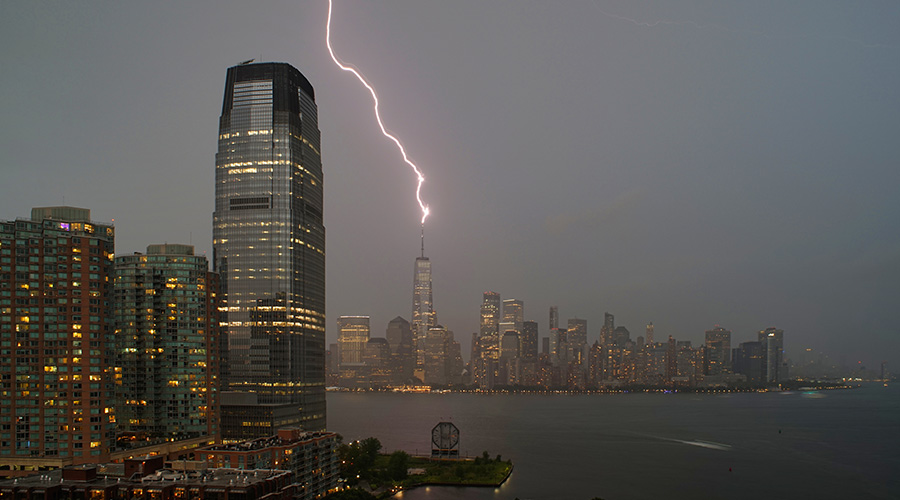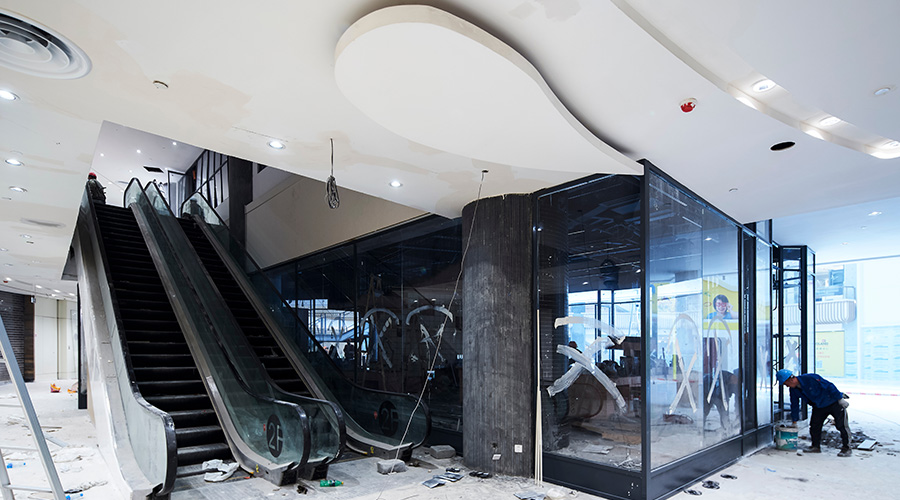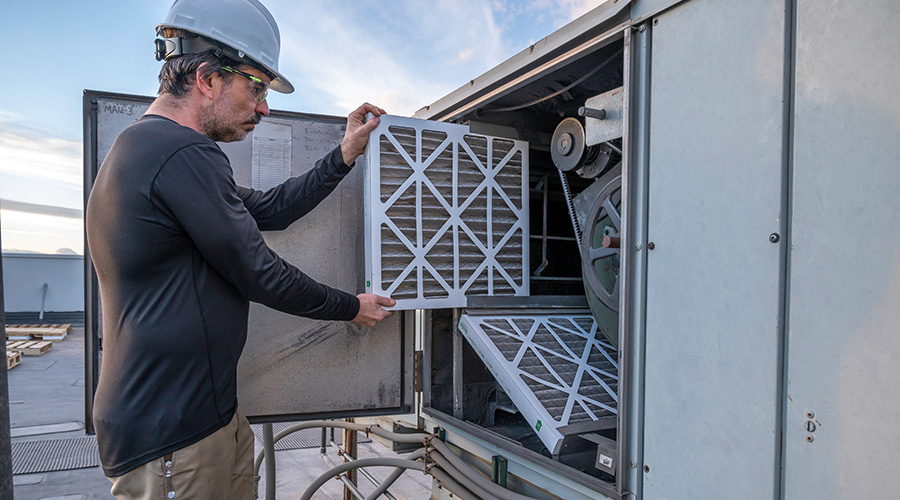
Updated Building Code Protects Against Lightning
Roofing, lighting industries come together to clarify how lightning protection systems should be attached to facilities April 25, 2024
By Doug Carroll, Contributing Writer
If facility managers ever doubted the importance of protecting the integrity of a building’s envelope from lightning, the 2024 International Building Code will make you think differently.
For the first time, the code clarifies how lightning protection systems — when used on institutional and commercial structures — should be attached to roofing assemblies, roof covers, metal edge systems and gutters.
The effort to update the code was herculean. It involved the Single Ply Roofing Industry along with representatives from the Lightning Protection Institute, the United Lightning Protection Association, UL Solutions, the Asphalt Roofing Manufacturers Association, the National Roofing Contractors Association, the National Electrical Manufacturers Association and the Roof Coating Manufacturers Association.
For those who are counting, that’s input from eight organizations. And for those thinking “whew,” then they must be Amanda Hickman.
“We had to address the concerns of the roofing industry but also make sure that lightning protection would work properly,” says Hickman, president of the Florida-based Hickman Group, an independent code-consulting firm.
“We had to go through a lot of discussion to find a balance. But we figured it out and came to a consensus.”
Why so much work?
Because it required bringing together two industries. Commercial roofing contractors generally are not experts in lightning protection installation, and lighting installers are not roofing experts.
And because lightning protection is an issue with bottom-line impact. It matters to get it right.
According to the Lightning Protection Institute, insurance companies paid nearly $1 billion in lightning-related claims in 2018, the most recent year for which data is available. In addition to building damage, lightning poses a demonstrable threat to data, security, and all electrical and electronic components in a building.
Essentially, new language in the code stipulates that work on lightning protection systems must be completed in accordance with the manufacturer’s (or a design professional’s) instructions. Components must be properly flashed when they are secured to, or penetrate, the roof.
The benefits of such detail to facility managers are significant, Hickman said, and she provided an example.
“If facility managers have a building with a lightning protection system now installed to code,” she says, “the language in the code addresses roofing concerns in a wind event. The code now requires attachment (of the system) in a certain way.”
All parties have an interest in protecting the integrity of the building envelope.
“Lightning protection came up because members (of the Single Ply Roofing Industry) had done large projects with issues of penetrations,” Hickman says. “They started to talk about whether codes addressed things being attached.”
With the updated code, it becomes important for manufacturers of edge metal systems and roofing materials to work with the lightning protection industry, providing clear installation instructions for equipment in conjunction with the roofing system.
Doug Carroll is a freelance writer based in Chandler, Arizona.
Next
Read next on FacilitiesNet












